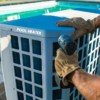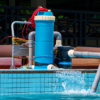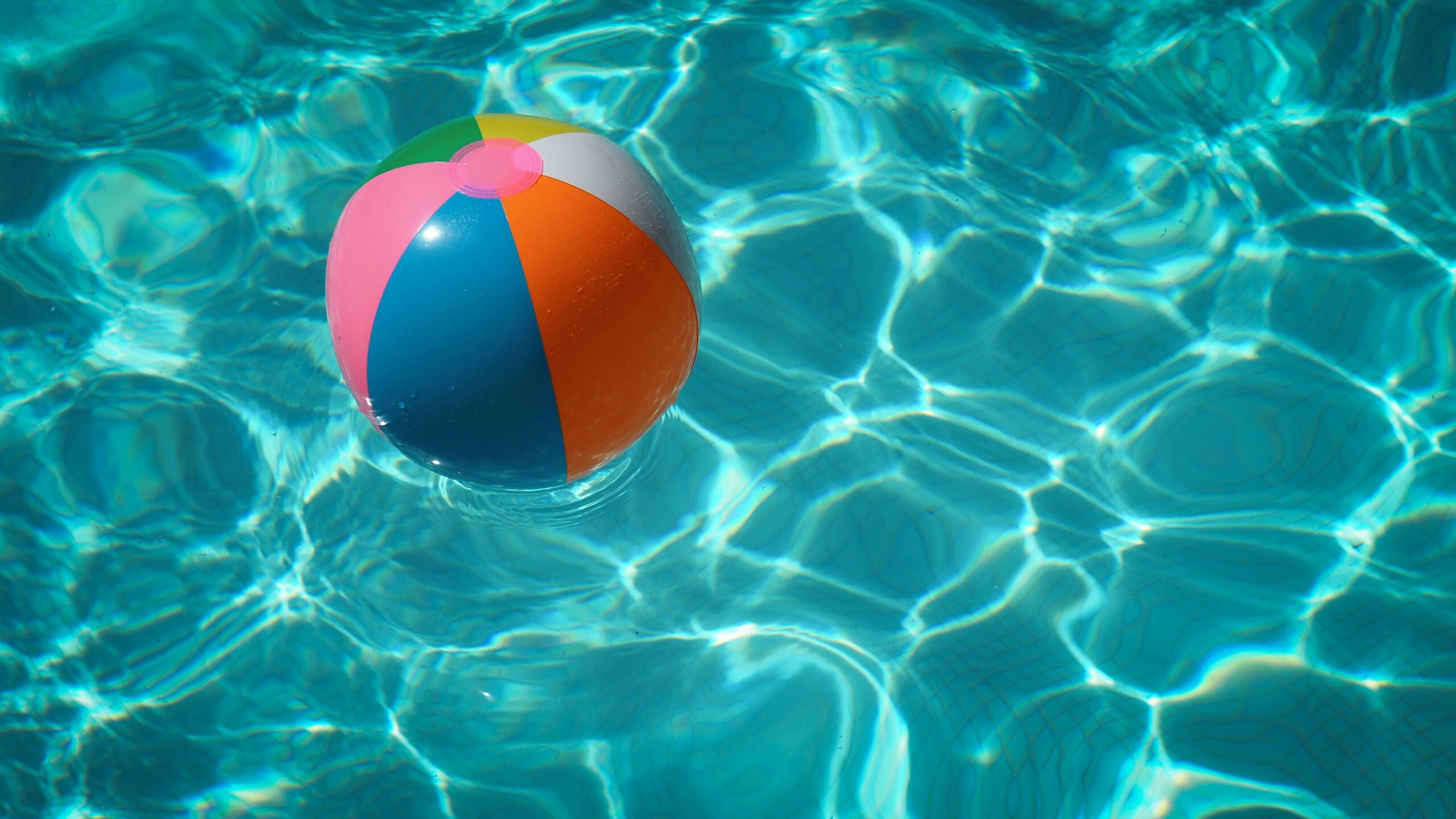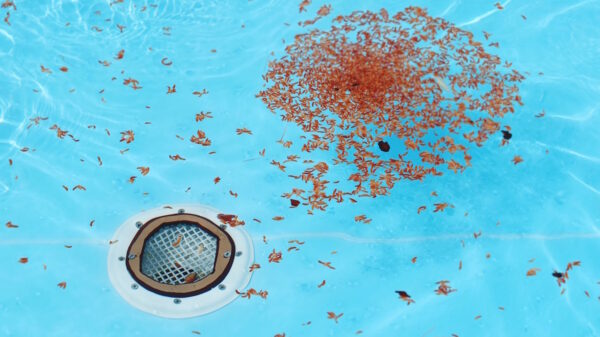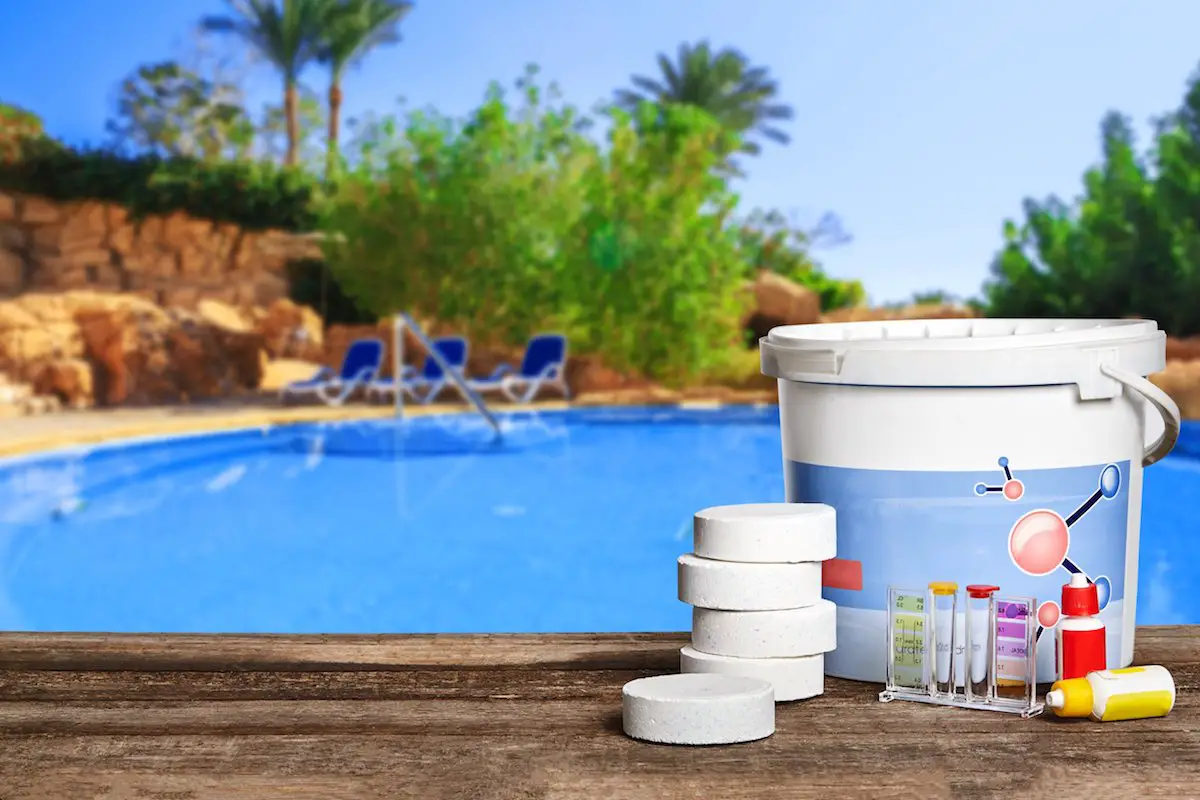Some pool owners may be concerned about the pH level of their pool water. While the ideal pH level for pool water is between 7.2 and 7.6, it is not uncommon for these levels to fluctuate outside of this range. However, if the pH level of your pool water drops below 7.0 or rises above 8.0, it is important to take action to correct the problem. The ideal pH level for swimming pools is between 7.2 and 7.6. If the pH level of your pool is too high, you can add muriatic acid to the pool. So, if you are wondering what should I do when my pool pH is low?
If the pH level in your pool is too low, you should test the pH levels with a water test kit. If the pH level in your pool is low, then you’ll need to add some chemicals to the water to raise the pH back up. Common pool chemicals that are used include soda ash, baking soda, calcium chloride, muriatic acid, or sodium bisulfate to the pool. Also, make sure you are properly circulating and filtering your pool water.
If your pool is still not maintaining a pH within the recommended range, you may need to consult with a pool professional. Additionally, you may need to adjust the pH level more frequently if the pool is being used frequently or if there are any suspected problems. To learn how to raise the pH level of your pool, keep reading on!

What to Do When Pool pH Is Low
If your pool’s pH is low, there are a few things you can do to raise it back up to a healthy level.
First, check the pH or alkalinity of your pool water with a test kit to be sure that it is indeed low. If the alkalinity is low, you can add sodium bicarbonate (baking soda) to raise the pH. You’ll need to add about 1 pound of baking soda per 10,000 gallons of pool water to raise the pH by 0.2. The most common way to do this is by adding soda ash, which you can find at most pool supply stores. Be sure to follow the directions on the package carefully so that you don’t add too much or too little.
Once you’ve added the soda ash, test the pH of the water again and adjust as necessary until it is back in the healthy range. If not, check the calcium hardness of your pool water. If the calcium hardness is low, you can add calcium chloride to raise the pH. You’ll need to add about 1 pound of calcium chloride per 10,000 gallons of water to raise the pH by 0.2. Finally, if your pool has high pH levels, you can add muriatic acid or sodium bisulfate to lower the pH. You’ll need to add about 1/2 pound of muriatic acid or 1 pound of sodium bisulfate per 10,000 gallons of pool water to lower the pH by 0.2.
It’s also a good idea to check the pH level regularly, even when it seems to be fine, to ensure that it doesn’t drop again. By keeping an eye on the pH level and making adjustments as needed, you can keep your pool water healthy and balanced all season long!
Steps to Check pH Levels
It’s important to check your pH levels regularly, especially if you’re experiencing any health problems. Here’s how to do it properly:
1. Purchase a pH testing kit from a drugstore or online retailer.
2. Follow the instructions that come with the kit. Usually, you’ll need to collect a small sample of your urine or saliva.
3. Compare your results to the chart that comes with the kit. This will tell you whether your pH levels are normal, alkaline, or acidic.
4. If your pH levels are outside of the normal range, talk to your doctor about possible causes and treatment options.
5. Remember, it’s important to test your pH levels regularly so that you can catch any changes early.
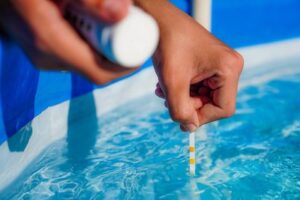
Low PH Level Problems
If your pool water’s pH levels are low, it’s important to take action to raise them. Low pH levels can lead to several problems, including:
– Corrosion of Metal Surfaces
– Staining of Pool Surfaces
– Eye and Skin Irritation
If your pool’s pH levels are low, there are a few potential problems that could arise. First, chlorine may not be as effective at killing bacteria and other contaminants. This could lead to increased levels of bacteria in the water, which could pose a health risk to swimmers. Additionally, low alkalinity levels can cause damage to pool equipment and surfaces. Over time, this damage can lead to costly repairs or replacements. Finally, low pH levels can make the water feel uncomfortable to swimmers, as it can be acidic. So, if you are concerned about any of these potential problems, it is important to test your pool’s pH levels and adjust them accordingly.
If the pH level of a pool is too high, it can cause skin irritation and eye problems. If the pH level of a pool is too low, it can also cause skin irritation and eye problems. Additionally, low pH levels can also lead to corrosion of pool equipment.
Ways to Fix pH Levels
There are several ways to adjust the pH level of your pool, but not all of them are effective. Some methods may even end up causing more harm than good. One way to raise the pH level of your pool is to add baking soda. However, this can cause the water to become cloudy and may also irritate your skin and eyes. Another way is to add muriatic acid. This can also cause the water to become cloudy and may damage pool surfaces. The best way to adjust the pH level of your pool is to use a quality pH test kit and follow the instructions carefully. This will help you avoid any potential problems and ensure that your pool is safe and comfortable to use. This is especially great for those that need to keep kids entertained during the summer.
How to Test Levels
Pool Test Kit
There are a few simple ways to test your pool’s pH levels. You can use a pool test kit, which you can purchase at most pool supply stores. Test kits typically involve adding a sample of your pool water to a vial of the test solution and comparing the color of the resulting solution to a chart.

pH Strips
Another option is to use pH strips, which are available at most drugstores. To use pH strips, simply dip them in your pool water and compare the color of the strip to the provided chart.
Chemicals
If your pool’s pH levels are low, you’ll need to take steps to raise them. This can be done by adding chemicals to the water, such as soda ash or sodium bicarbonate. Be sure to follow the manufacturer’s instructions carefully when adding chemicals to your pool.
You should also test the pH levels regularly and take steps to keep them in the proper range. This will help ensure that your pool is safe and comfortable for everyone to enjoy.
It’s important to test the pH levels in your pool regularly. The ideal pH level for swimming pools is between 7.2 and 7.6. If the pH level is too high or too low, it can cause problems for swimmers, including skin irritation and eye problems.
Testing the pH level of your pool is easy to do with a simple test kit. Test kits are available at most pool supply stores. To test the pH level, simply follow the instructions that come with the kit.
If you find that the pH level of your pool is outside of the ideal range, there are a few things you can do to adjust it. One thing you can do is add muriatic acid to the pool. Another thing you can do is add soda ash to the pool.
It’s important to test the pH levels of your pool regularly and to make adjustments as needed to keep the pH levels in the ideal range. Doing so will help to ensure that your pool is safe and enjoyable for everyone.
Related Questions
Why Is My Pool pH Level Low?
There are several potential causes of pH fluctuations in pool water, including chlorine levels that are too high or too low, the presence of algae or other contaminants, and the use of acidic or basic cleaning products. In most cases, you can fix the problem by adjusting the chlorine levels, shock-treating the pool, or adding an algaecide.
Why Should You Not Swim In a Pool with Low pH Levels?
When pH levels in a pool are low, it can create some serious hazards for swimmers. Low pH levels can cause skin and eye irritation, and can also lead to respiratory problems. In addition, low pH levels can increase the level of chlorine in the water, which can be dangerous for swimmers who are allergic to chlorine.
Finally, if you are not sure how to test the alkalinity level in your pool, you can contact a professional pool service company for assistance.
Summary
In conclusion, this article went over the several ways to adjust the pH level of your pool, and why it is important to make sure that it is balanced. A low ph level in your pool can damage your pool, as well as be dangerous for those swimming in it. That’s why it is important to test the alkalinity levels of your pool’s water at least once a week. However, it’s a good idea to test the pH levels more frequently if the pool is being used frequently or if there are any suspected problems. Keeping your pool water’s pH level more balanced now and into the future, it will not only make your pool cleaner but will also prevent any health issues for you and your family. Thanks for reading!


